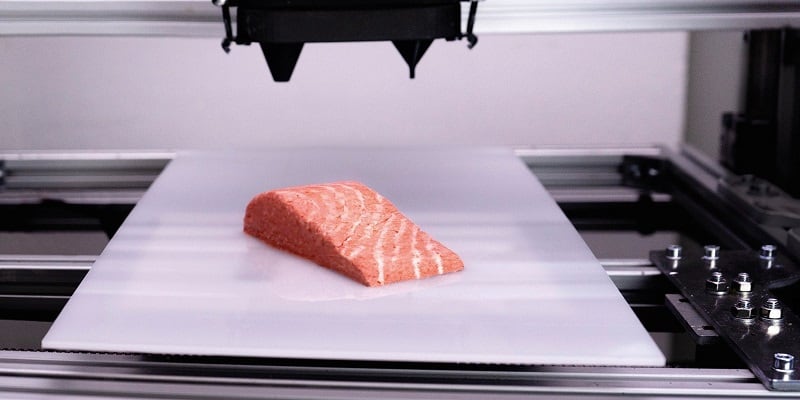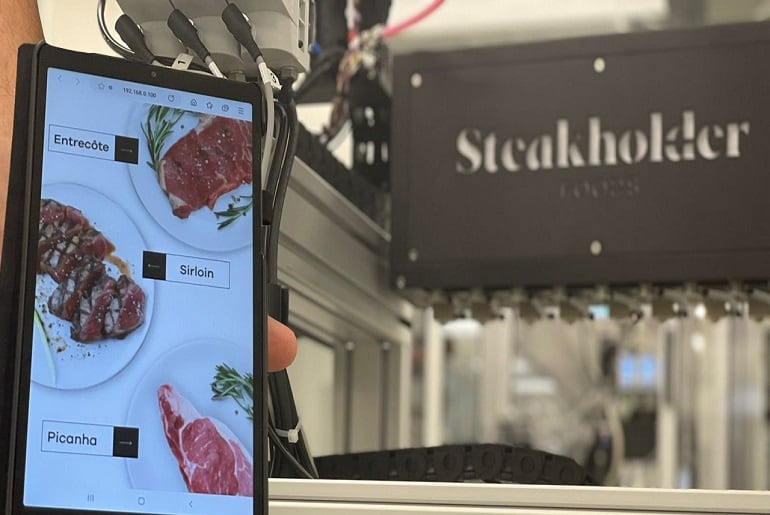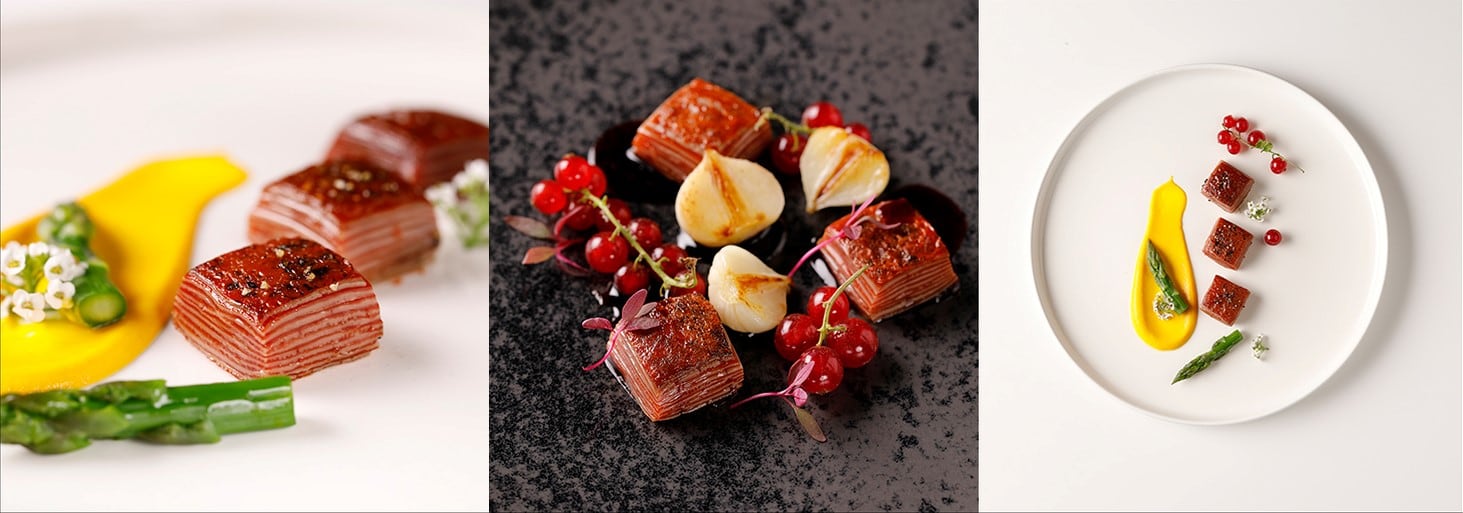Steakholder Foods (formerly MeaTech 3D) works in meat alternatives: the Israeli start-up is an innovator of cell cultivation technology – and considers itself the first and only cultivated cell developer listed on the Nasdaq Stock Market – while also developing 3D printing technology to produce meat and fish products from plant- and/or cell-based ingredients.
It is this second expertise that has resulted in the launch of an ‘industry first’ plant-based 3D printed eel. The product was developed using Steakholder’s proprietary ‘DropJet’ technology, which CEO Arik Kaufman says is responsible for mimicking ‘real meat texture’.
Achieving ‘real’ meat texture with plant-based ingredients
Today, most plant-based meat alternatives are ‘ground’ in texture. Be it plant-based burgers, sausages, or meat-free meatballs, these properties are considered easier to achieve with plant-based ingredients.
But according to Steakholder, its proprietary technology – which it has coined DropJet – can create ‘real’ meat texture using plant-based materials and/or cultivated cells. “In addition, this technology is a platform to produce a variety of products with complete digital control,” Kaufman told FoodNavigator.
“Our 3D printing technology offers complete digital control on the printing process so one can design the product’s 3D modelling, texture, flavour, nutritional values and more. It is built to be modular with printing capacity that can reach high throughput of [hundreds] of tons per month.”
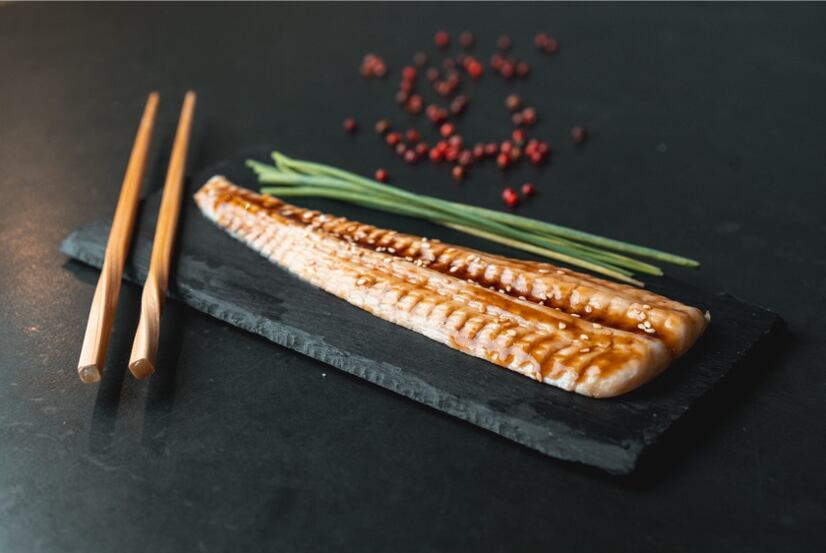
When working to replicate eel, the 3D printing technology allows for the meat’s ‘complex texture’ to be achieved through precision layering combined with a ‘unique’ combination of materials used within the technology.
Plant-based ingredients for now, cultivated cells in the future
The new eel product is currently based on plant-based ingredients. Specifically, the matrix is made from ‘high quality’ plant proteins, fat, and ‘other vegan ingredients’ designed to mimic the texture and flavour of conventional eel. The ingredients also offer ‘significant’ economic advantages, the CEO revealed. “The product is highly profitable for manufacturers and affordable for the end consumer.”
As to the nutritional profile of Steakholder’s 3D printed eel alternative, the company aims to achieve on par credentials with the real thing. “For any product we develop, we aim to reach at least the same nutritional values,” explained Kaufman. “Part of the flexibility of our 3D printing technology allows the improvement and adjustment of the nutritional values according to its partners’ requirements.”
While the company’s eel product is currently solely based on plant-based ingredients, it expects to incorporate cultivated eel cells in the future, as economics of scale allow for more price-competitive development.
Steakholder remains committed to cultivated meat, the CEO assured us, and the business continues to do ‘pioneering work’ in this area. Indeed, as part of the company’s business model, it offers 3D printing technology and ink (made from both plant-based materials and cultivated cells) to its B2B clients.
“As cultivated cells have yet to reach commercialisation readiness, we offer our ink as plant-based in the first stage, and when it makes sense economically, our technology can integrate cultivated cells,” explained Kaufman.
“That approach allows us to offer a winning business model where our partners can benefit from the innovative technology to 3D print plant-based meat and fish products with the potential to be much better than most of the alternatives in the market today.”
Steakholder is currently exploring collaborations to commercialise its new product buy supplying partners with its proprietary 3D printers and ink.
Offering an alternative, ‘more sustainable’ solution to traditional eel
In so doing, the company predicts its customers will be able to mass-produce its 3D printed eel alternative at a ‘competitive’ price range, and therefore help to tackle the cost challenges associated with the current global prices of eel.
The global eel market primarily relies on wild eel, but eel stocks are on the decline. In Europe, illegal trade of the critically endangered European eel is considered the continent’s ‘largest wildlife crime’, and even further afield (in Japan, for example), eels are at risk of extinction. Farming eel comes with its own challenges: for one, breeding can prove difficult due to the ray-finned fish’s complex life cycle.
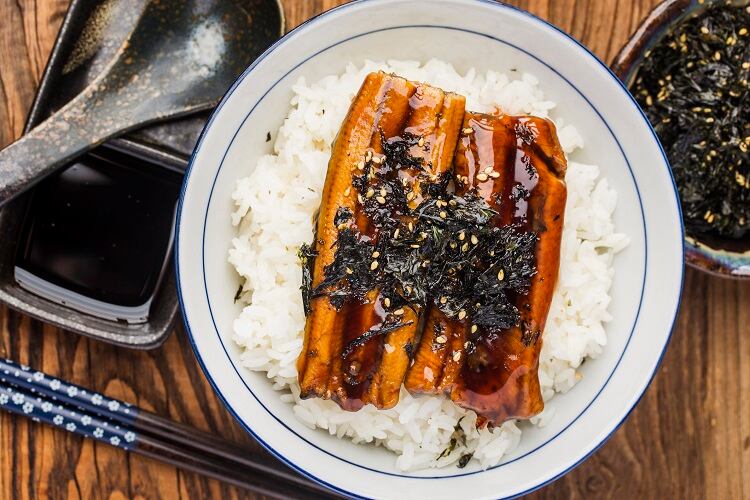
For Steakholder, the need to develop a sustainable alternative is obvious. The company’s plant-based eel is being developed with the Asian and Japanese markets in mind (in Japan, 1.5m people say they eat eel more than twice a month, according to Statista) but not only.
“Eel is mainly sold in Asia but also around the world,” explained Kaufman. “The product is an example of the 3D printing capabilities that can develop and produce more advanced products with the texture and flavour of real meat.”
Steakholder Foods’ plant-based eel alternative product is the latest development in a line of advances in cell cultivation and 3D printing technology. The company started its innovation journey in beef, before growing its capabilities in poultry, seafood and pork.
In 2021, the company acquired Begian cultured fat developer Peace of Meat. The following year, it announced a collaboration with cultured seafood company Umami Meats, and also started developing cultured pork products from a new line of iPS porcine cells. Also in 2022, the company announced its development of marbled cell-based beef bites developed with its 3D printing tech.
And in 2023, Steakholder debuted a ready-to-cook cultivated grouper fish product using grouper cells provided by Umami Meats.



